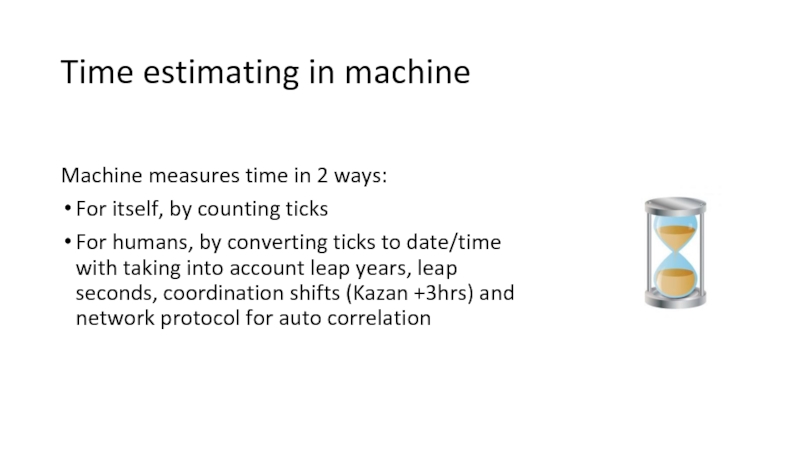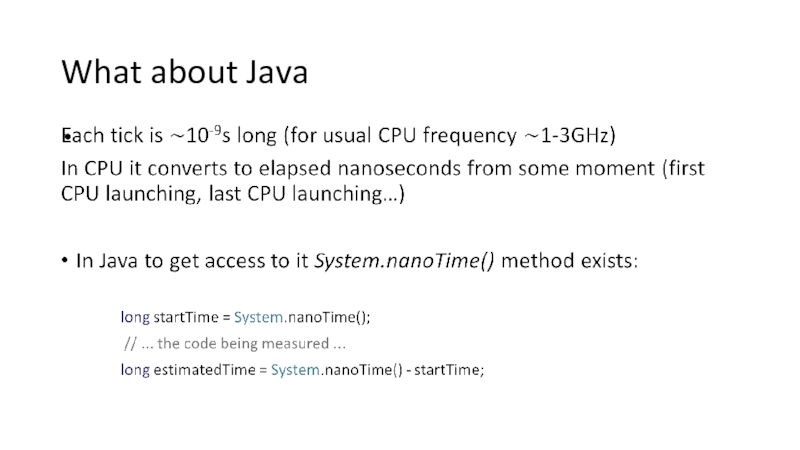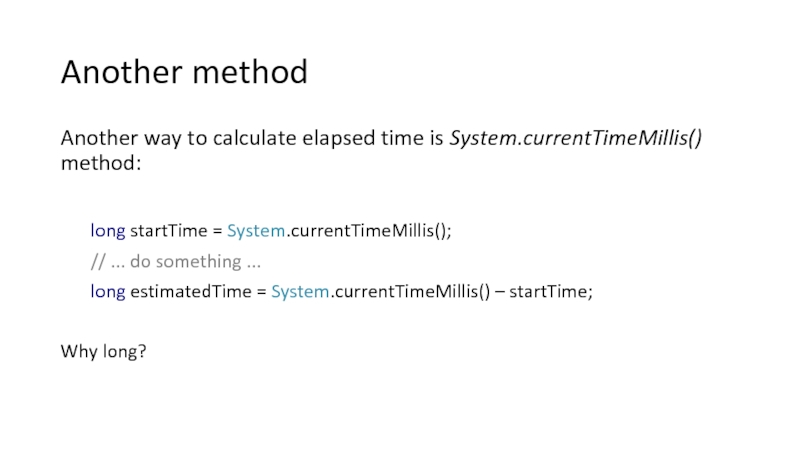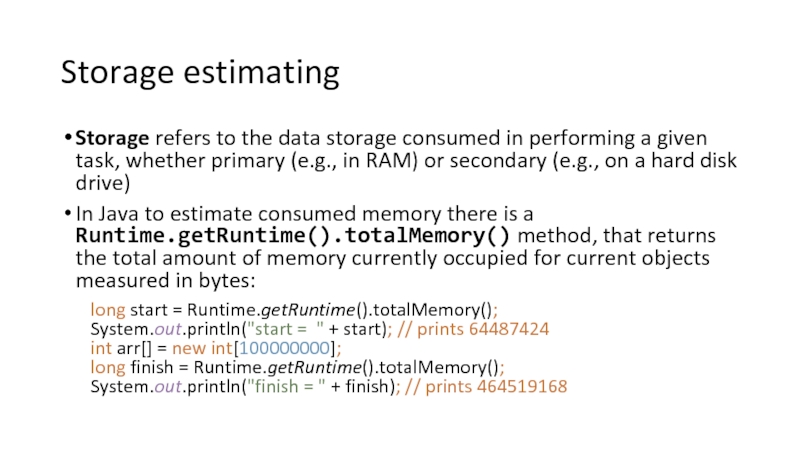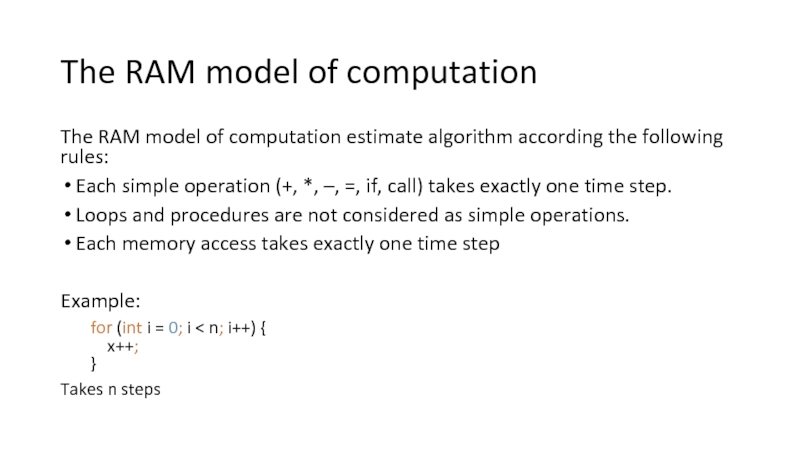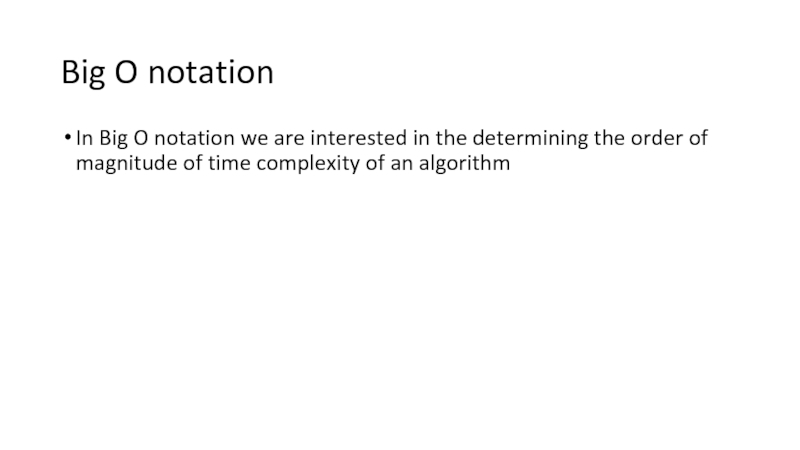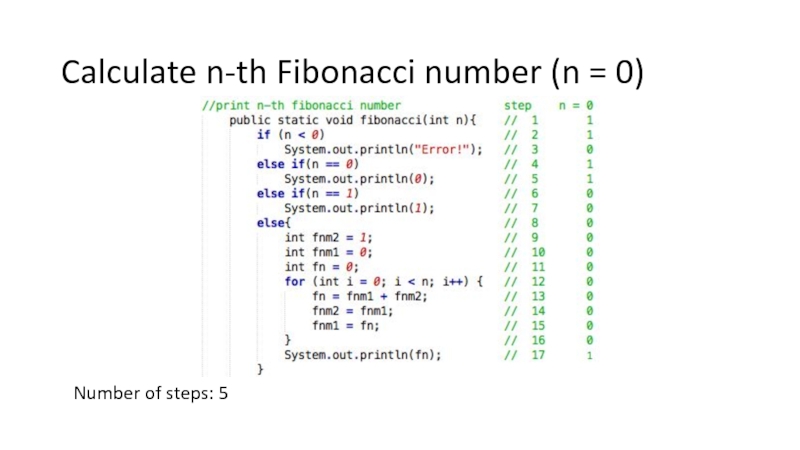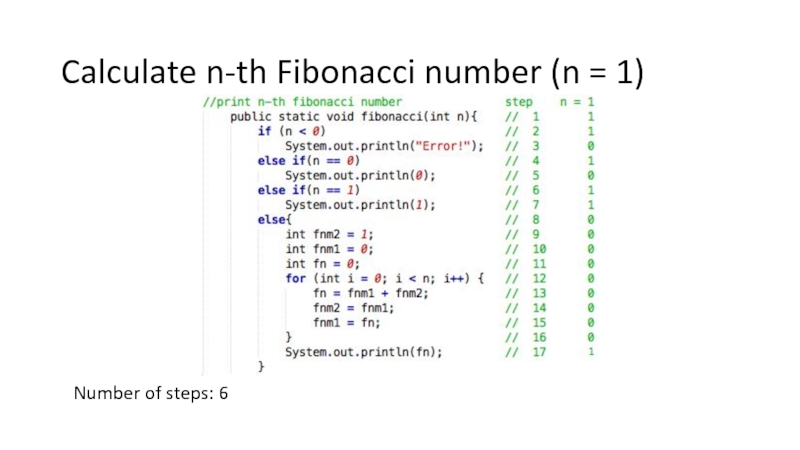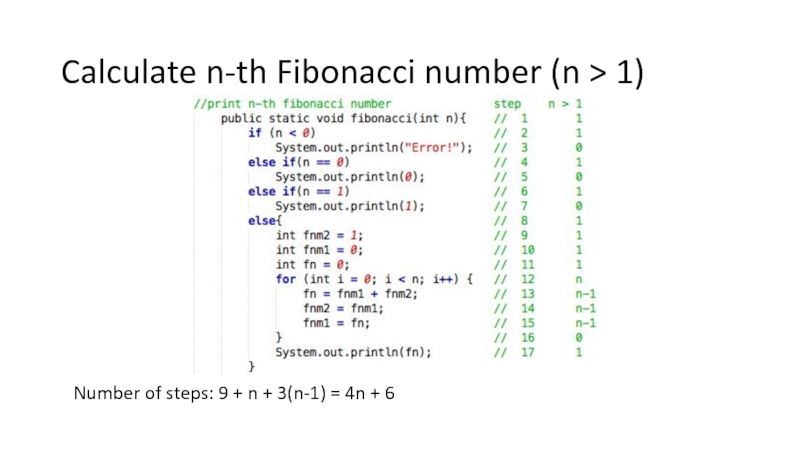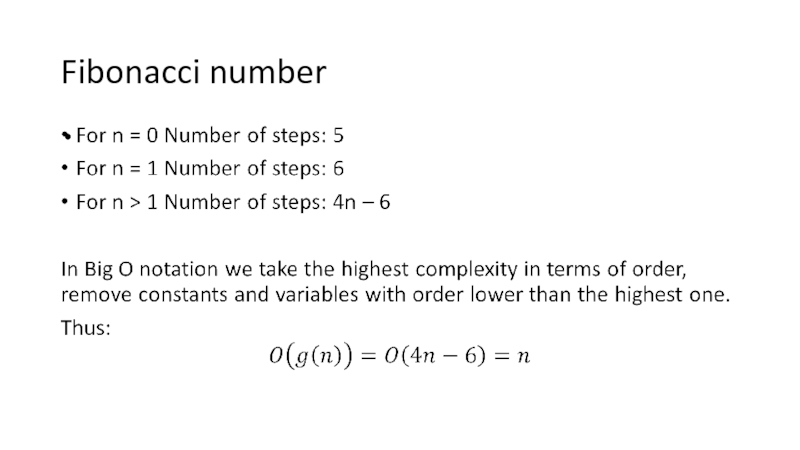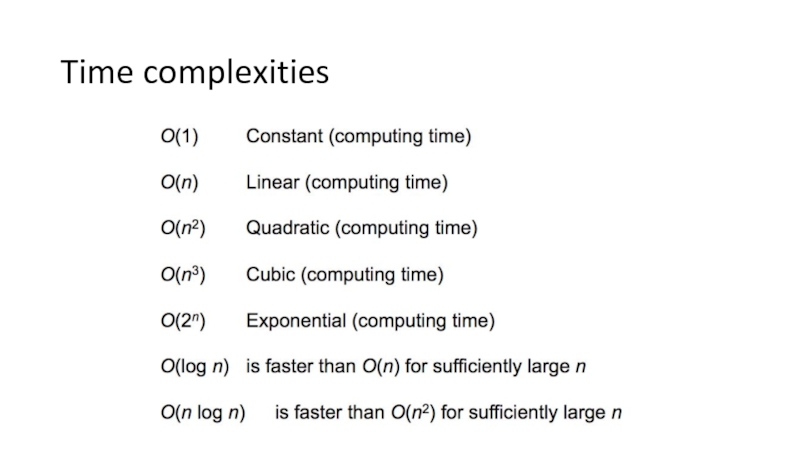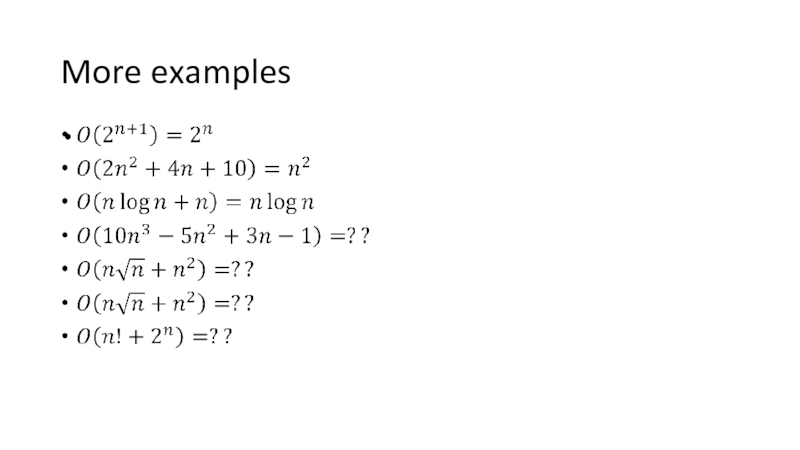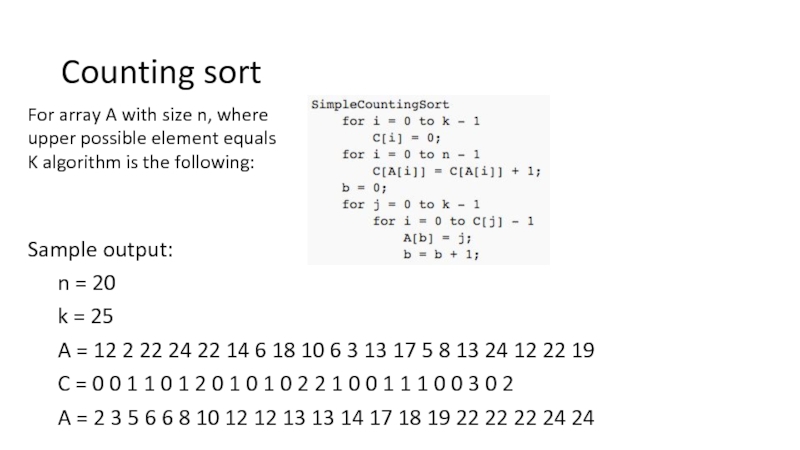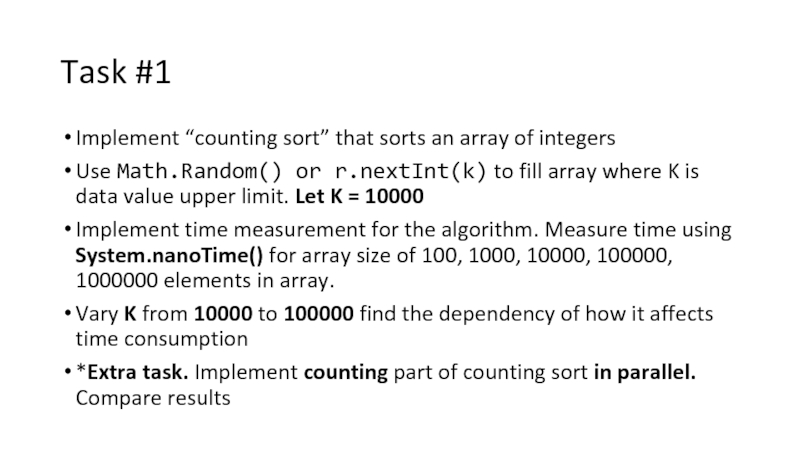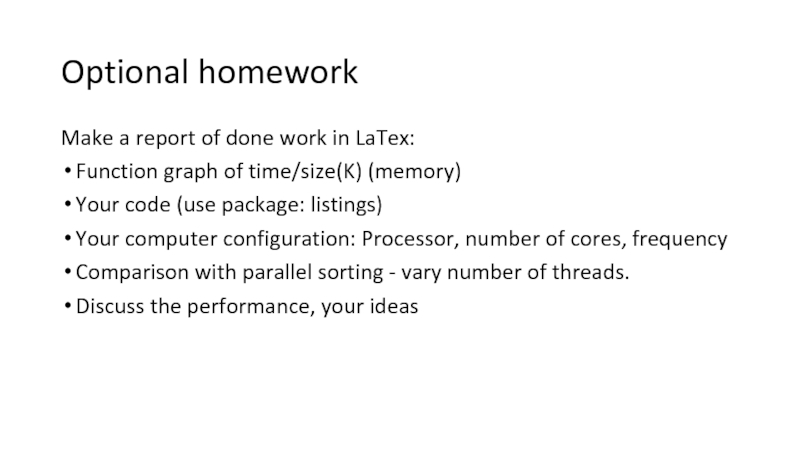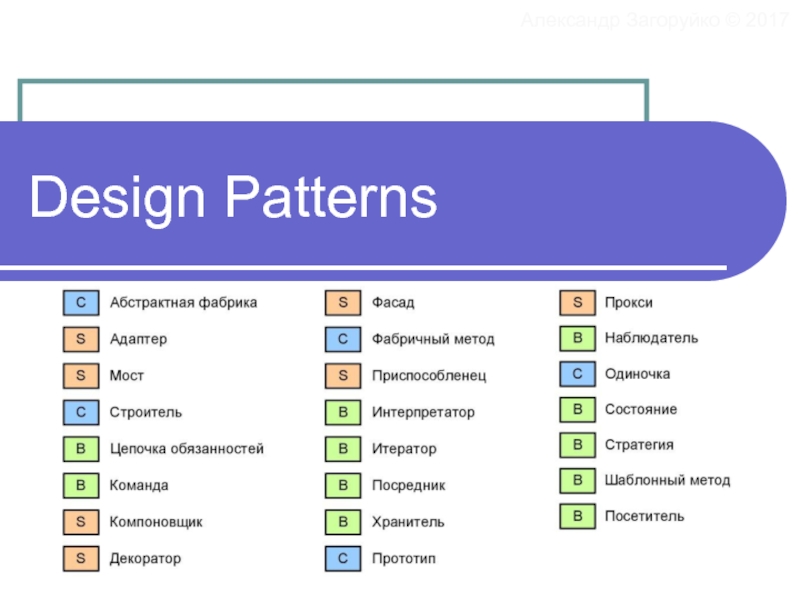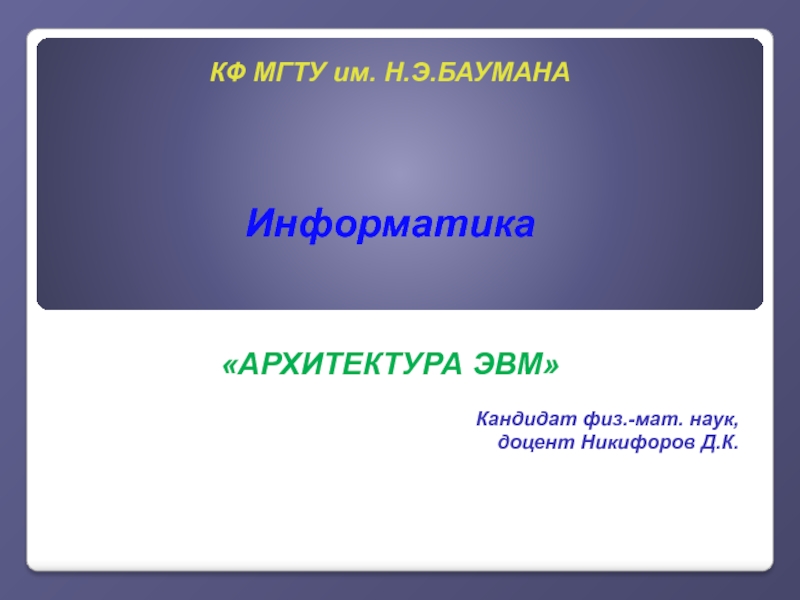- Главная
- Разное
- Дизайн
- Бизнес и предпринимательство
- Аналитика
- Образование
- Развлечения
- Красота и здоровье
- Финансы
- Государство
- Путешествия
- Спорт
- Недвижимость
- Армия
- Графика
- Культурология
- Еда и кулинария
- Лингвистика
- Английский язык
- Астрономия
- Алгебра
- Биология
- География
- Детские презентации
- Информатика
- История
- Литература
- Маркетинг
- Математика
- Медицина
- Менеджмент
- Музыка
- МХК
- Немецкий язык
- ОБЖ
- Обществознание
- Окружающий мир
- Педагогика
- Русский язык
- Технология
- Физика
- Философия
- Химия
- Шаблоны, картинки для презентаций
- Экология
- Экономика
- Юриспруденция
ADS:lab session #2 презентация
Содержание
- 1. ADS:lab session #2
- 2. Time estimating in machine Machine measures time
- 3. What about Java
- 4. Another method Another way to calculate elapsed
- 5. Storage estimating Storage refers to the data storage consumed in
- 6. The RAM model of computation The RAM
- 7. Big O notation In Big O notation
- 8. Calculate n-th Fibonacci number (n = 0) Number of steps: 5
- 9. Calculate n-th Fibonacci number (n = 1) Number of steps: 6
- 10. Calculate n-th Fibonacci number (n > 1)
- 11. Fibonacci number
- 12. Time complexities
- 13. More examples
- 14. Counting sort Sample output: n = 20
- 15. Task #1 Implement “counting sort” that sorts
- 16. Optional homework Make a report of done
Слайд 2Time estimating in machine
Machine measures time in 2 ways:
For itself, by
counting ticks
For humans, by converting ticks to date/time with taking into account leap years, leap seconds, coordination shifts (Kazan +3hrs) and network protocol for auto correlation
For humans, by converting ticks to date/time with taking into account leap years, leap seconds, coordination shifts (Kazan +3hrs) and network protocol for auto correlation
Слайд 4Another method
Another way to calculate elapsed time is System.currentTimeMillis() method:
long startTime
= System.currentTimeMillis();
// ... do something ...
long estimatedTime = System.currentTimeMillis() – startTime;
Why long?
// ... do something ...
long estimatedTime = System.currentTimeMillis() – startTime;
Why long?
Слайд 5Storage estimating
Storage refers to the data storage consumed in performing a given task, whether primary (e.g.,
in RAM) or secondary (e.g., on a hard disk drive)
In Java to estimate consumed memory there is a Runtime.getRuntime().totalMemory() method, that returns the total amount of memory currently occupied for current objects measured in bytes:
long start = Runtime.getRuntime().totalMemory(); System.out.println("start = " + start); // prints 64487424 int arr[] = new int[100000000]; long finish = Runtime.getRuntime().totalMemory(); System.out.println("finish = " + finish); // prints 464519168
In Java to estimate consumed memory there is a Runtime.getRuntime().totalMemory() method, that returns the total amount of memory currently occupied for current objects measured in bytes:
long start = Runtime.getRuntime().totalMemory(); System.out.println("start = " + start); // prints 64487424 int arr[] = new int[100000000]; long finish = Runtime.getRuntime().totalMemory(); System.out.println("finish = " + finish); // prints 464519168
Слайд 6The RAM model of computation
The RAM model of computation estimate algorithm
according the following rules:
Each simple operation (+, *, –, =, if, call) takes exactly one time step.
Loops and procedures are not considered as simple operations.
Each memory access takes exactly one time step
Example:
for (int i = 0; i < n; i++) { x++; }
Takes n steps
Each simple operation (+, *, –, =, if, call) takes exactly one time step.
Loops and procedures are not considered as simple operations.
Each memory access takes exactly one time step
Example:
for (int i = 0; i < n; i++) { x++; }
Takes n steps
Слайд 7Big O notation
In Big O notation we are interested in the
determining the order of magnitude of time complexity of an algorithm
Слайд 14Counting sort
Sample output:
n = 20
k = 25
A = 12 2 22
24 22 14 6 18 10 6 3 13 17 5 8 13 24 12 22 19
C = 0 0 1 1 0 1 2 0 1 0 1 0 2 2 1 0 0 1 1 1 0 0 3 0 2
A = 2 3 5 6 6 8 10 12 12 13 13 14 17 18 19 22 22 22 24 24
C = 0 0 1 1 0 1 2 0 1 0 1 0 2 2 1 0 0 1 1 1 0 0 3 0 2
A = 2 3 5 6 6 8 10 12 12 13 13 14 17 18 19 22 22 22 24 24
For array A with size n, where upper possible element equals K algorithm is the following:
Слайд 15Task #1
Implement “counting sort” that sorts an array of integers
Use Math.Random()
or r.nextInt(k) to fill array where K is data value upper limit. Let K = 10000
Implement time measurement for the algorithm. Measure time using System.nanoTime() for array size of 100, 1000, 10000, 100000, 1000000 elements in array.
Vary K from 10000 to 100000 find the dependency of how it affects time consumption
*Extra task. Implement counting part of counting sort in parallel. Compare results
Implement time measurement for the algorithm. Measure time using System.nanoTime() for array size of 100, 1000, 10000, 100000, 1000000 elements in array.
Vary K from 10000 to 100000 find the dependency of how it affects time consumption
*Extra task. Implement counting part of counting sort in parallel. Compare results
Слайд 16Optional homework
Make a report of done work in LaTex:
Function graph of
time/size(K) (memory)
Your code (use package: listings)
Your computer configuration: Processor, number of cores, frequency
Comparison with parallel sorting - vary number of threads.
Discuss the performance, your ideas
Your code (use package: listings)
Your computer configuration: Processor, number of cores, frequency
Comparison with parallel sorting - vary number of threads.
Discuss the performance, your ideas

